Slovenia is a country of a little over 2 million that is known for its mountains, ski resorts and lakes.
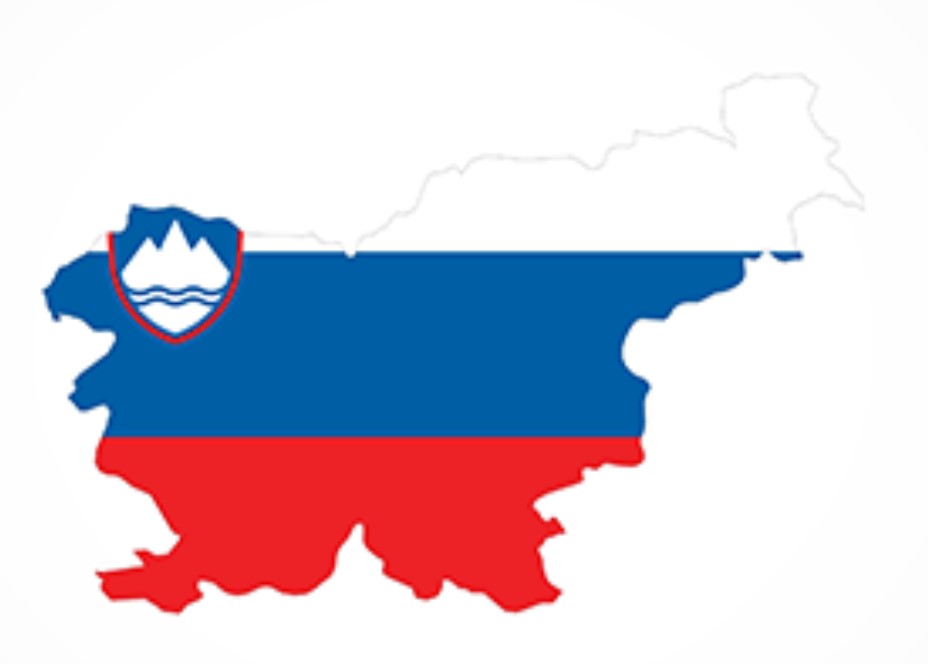
Getting here, for us, involved an 8 hour train ride from Budapest through to the capital of Ljubljana. Now this train ride, while long, was relatively pleasant and the scenery out the window was very nice indeed. The Slovenian countryside is fantastic with scenic landscapes popping up virtually every kilometre of the journey. And the tourist shots below (not ours sadly) really show it well, but Jill did manage to get some great bridge and church shots from out of the train window.


Ljubljana – The city of dragons
The dragon is the symbol of Ljubljana and has pride of place on the city coat of arms and throughout the city.
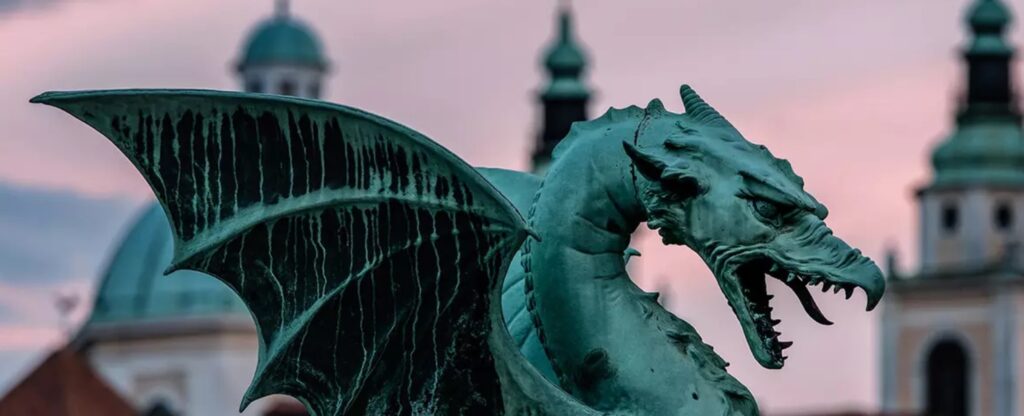
Legend has it that Ljubljana was founded by Jason (the hero of Greek mythology who stole the golden fleece and fled) with his comrades (the Argonauts). They came across the Black Sea, up the Danube and the Sava until they reached the Ljubljanica. There they dismantled their ship to carry it overland to the Adriatic coast, where they rebuilt it and set sail back to Greece. On their way to the coast, they were forced to stopp (for winter) at a large lake in the marshes near the source of the Ljubljanica. There a dragon was said to dwell, whereupon Jason fought, defeated and killed the monster.
Ljubljana today is Slovenia’s largest city (280,000 people). Car traffic has been restricted in the central area making Ljubljana one of Europe’s greenest and most liveable capitals, not to mention ideal for pedestrians. The Ljubljanica River flows through the city’s heart and in summer, cafes set up terrace seating along the river.
The main show in town is the Ljubljana Castle which sits atop the 375 meter hill overlooking oldtown. Originally a medieval fortress, it is thought to have been constructed in the 11th century and then rebuilt in the 12th century. Most of it today dates to the 16th century after it was again rebuilt after an earthquake. Over the centuries, the castle has played an important role and remained a symbol of the city.










Because it was not a home of a ruler or another important noble person and because a fortification in the area was no longer required, the castle started to lose its importance. The maintenance costs were too high so the castle began to crumble. From the top there are some fairly spectacular views over the entire city.
The easiest way to get up to the castle is by using the 70m-long funicular.
It goes from Krek Square near the centre of the old town and the Ljubljana Central Market to the Ljubljana Castle.
It is a one minute ride up or a 6 minute wait between trips. About 30 can ride at a time and there are massive queues at the bottom if you wait too long to get up and get moving.
The Dragon Bridge is a vehicle bridge that is adorned with four giant sheet-copper dragon statues.
There are also sixteen smaller dragon statues that can be found on the bridge.
It was built at the beginning of the 20th century when Ljubljana was part of the Austro-Hungarian Empire.
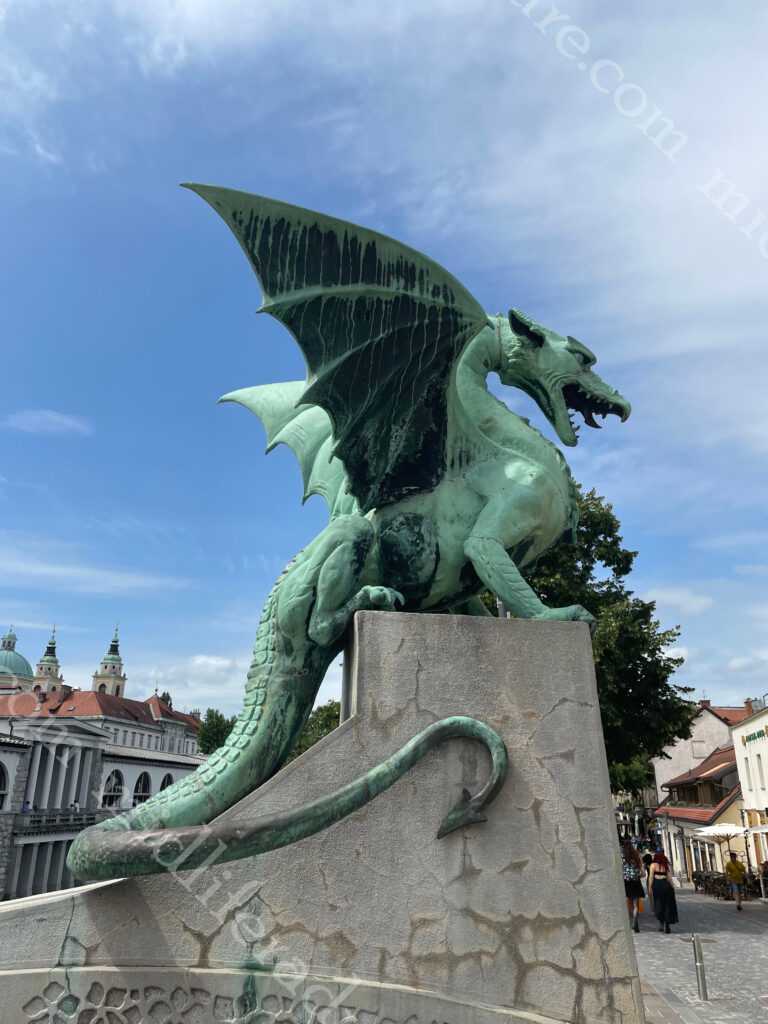

The Butchers’ Bridge is Ljubljana’s love bridge. It is a place where countless couples have symbolically padlocked their love and dropped the keys into the river Ljubljanica, which flows underneath.
The Triple Bridge (Tromostovje) was built to open up the city to both vehicle and pedestrian traffic. Today vehicles have been banned and is now solely for pedestrians.
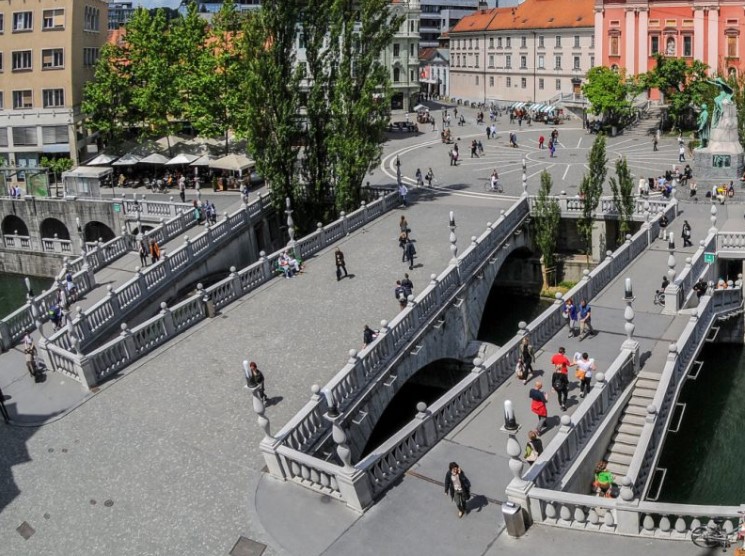

The Cobbler’s Bridge is the oldest bridge in Ljubljana, connecting two areas of the medieval town. In olden times, cobblers would display their shoes on this bridge.
And all around the old town area are the usual mix of funky bridges, statues and old buildings (that have now been repurposed into banks and shops etc).












Slovenian waiters are amazing. Over two different nights we saw two different groups behave atrociously in the restaurants that we had gone to. The first night was a big storm that took away the ability to seat people externally and a Spanish group of 4 parents and 4 children demanded to be seated inside, while around 30 other people waited patiently. Needless to say they had failed the attitude test and were sent away to find another place to eat.
The second night was at the oldest restaurant in town (started in 1776) when (another Spanish group) four older people came in demanding the world from a table that had only just been vacated but had not been cleared yet (maybe a 30-45 second window). We had finished eating by then and were ready to pay, so we warned our waiter of their entitlement and he just smiled.
His response was that in Slovakia, they did not put up with poor customer behaviour and can and are encouraged to be worse to bad customers.

In Slovakia, there is an abundance of brown bears, so much so that the Ministry of Natural Resources and Spatial Planning has approved the culling of 230 brown bears (in 2023).
The aim is to gradually reduce the country’s brown bear population to prevent major damage and keep people safe.
The meat from the brown bear cull does not go to waste and is harvested for use in restaurants, primarily for the making of bear goulash.
Ok…that was an overly long and politically correct way of saying I ate the brown bear goulash.
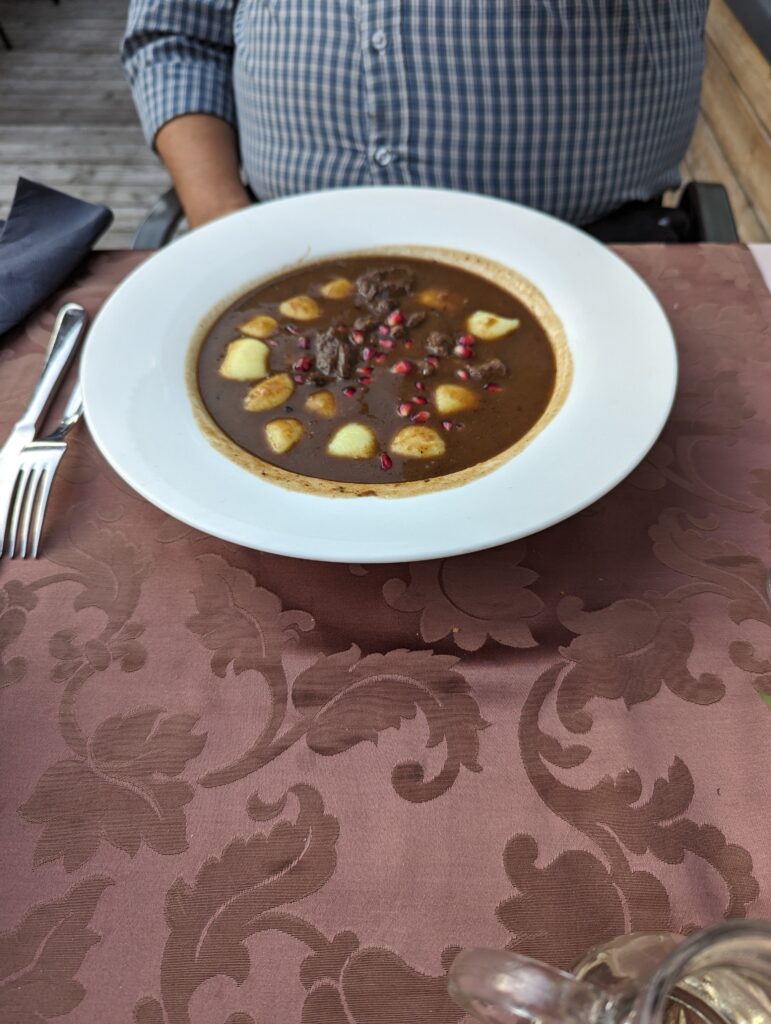
Ljubljana was nice. There was plenty to see and do and it was well priced. Not as cheap as Budapest but around 20% of the cost of Switzerland. If you push hard you could probably do the whole tourist run in a day. We were here for two and a half days and enjoyed the leisurely pace and still found enough to amuse ourselves. The people are really helpful, but do not suffer fools lightly. And don’t even try being an entitled westerner at restaurant or who knows what may happen to you.